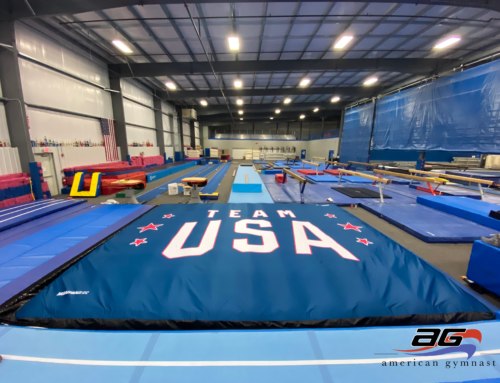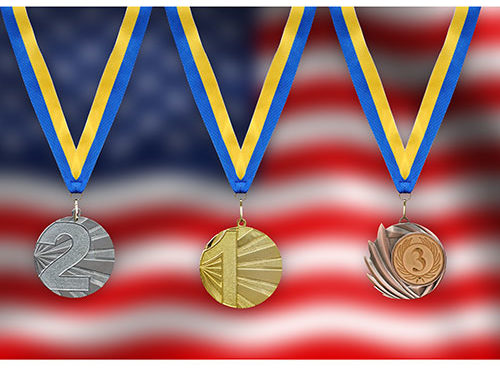Although I wasn’t able to see the full coverage of men’s Day 1 unfortunately (didn’t get the TV station at my house), I did follow along all the quick hits and have seen numerous routines from Leyva, Horton, Orozco, Dalton, and Mikulak on www.nbcolympics.com. I wanted to go ahead and post my initial impression of the meet, with plans to watch more as more videos become available.
My first impression of the meet was a sudden realization that hadn’t really hit me yet: ALL FIFTEEN PARTICIPANTS in the men’s Olympic Trials are not only healthy, but all have competed IN THE ALL-AROUND in all three qualifying competitions thus far. There were no petitions to either the Olympic Trials or any attempted petitions onto the Olympic team. Unbelievable!
And this leads me to my next realization, and something that I think this men’s selection committee should seriously consider. This really is quite a unique situation by today’s gymnastics standards – having NO injuries, NO petitions, NO selection camps, and NO extenuating circumstances for any athletes. We’ve always had some type of special situations to consider with these selection processes in the past…a gymnast who was able to compete at nationals but not Trials, a gymnast who was able to compete at Trials but not nationals, a past Olympian who’s still recovering from injury and either doesn’t compete or competes on only a couple of events, or selection camps still pending in order to finalize a team. But for the first time in as long as I can remember, there are essentially no “asterisks” in this U.S. men’s Olympic selection.
Since the team will be finalized immediately following this competition and all gymnasts are competing at full strength here, wouldn’t it make sense to use strictly scores to select this team?
After the final day of competition, the committee could literally use the scores from nationals and Trials on each event to determine the team that scores the highest. Although this is exactly what they already do during world and Olympic selection processes, their discussions often involves a good bit of “hypothesizing” and “estimating” because not every gymnast is typically at 100%, and petitions are often involved. This year, they theoretically could use an objective system like this to most fairly choose this five-member team.
At first glance, it certainly appears that the five gymnast most of us anticipated would make this Olympic team after nationals are still the five most likely candidates for London – Danell Leyva, John Orozco, Jonathan Horton, Jake Dalton, and Sam Mikulak. All five of these gymnasts again delivered Olympic-worthy performances on Day 1 of these Trials, and Mikulak – perhaps the most tenuous member of this potential team given his lack of experience – was particularly sensational. He even topped the entire field in the all-around, even outscoring a six-for-six effort from Danell Leyva. Talk about peaking at the right time…WOW! The fact that these five front runners just so happened to place in the top five in the all-around makes their Olympic spots seem even more secure. It appears they have truly risen to the surface and claimed their destinies – one by one – exactly the way an Olympic Trials should be.
But we still mustn’t forget that the Olympic team finals is a three-up-three count format, and it is still imperative to look at every possible scenario. Alex Naddour is making things very interesting, and even Steve Legendre put himself right back in the mix with 16’s on floor and vault. Paul Ruggeri had an outstanding day, and although he might not appear to be a likely contender for the team, an alternate spot is not out of the question.
If we were to use a strictly objective system to determine the highest scoring team, the biggest question to answer is how exactly to use the scores. At the end of these Trials, every gymnast will have exactly four scores on each event – two from nationals and two from Trials. Would it make sense to average all four scores? What about the best three? What about the best two? In order to truly see the highest scoring “potential” of each gymnast, would it make sense to use the single best score across all four routines?
I think the fairest way to use these scores would be to average the BEST THREE out of the four scores. This way, we’re still emphasizing consistency because three scores represents the “majority” of the scores they received, but it allows for one missed routine to avoid skewing a gymnast’s true scoring potential. We wouldn’t want to be deceived by one missed routine and ignore the fact that a gymnast put up 16’s the other three times. This would help a gymnast like Steve Legendre tremendously, for example.
I haven’t yet done these calculations, as we only have three scores to this point, but I will say that doing so could lead to some surprising results. Alex Naddour’s pommel horse scores have been climbing with each competition, and although Sam Mikulak has now hit three very clean pommel horse routines, eight tenths from a gymnast who has already proven he can hit this event in a world team finals (Naddour) would start to look awfully tempting when they really crunch these numbers. Although Mikulak is scoring higher in the all-around than Dalton, it’s important to note that Dalton has been outscoring him by a few tenths on both floor and rings, and both have been scoring about the same on vault. Since these are the events where both of these two would likely be needed most, Dalton may still be slightly more valuable. Mikulak could certainly be used on p-bars and as a backup on high bar, but scoring-wise we already have three other suitable gymnasts on these two events anyway, so he’s not as essential there. I have a feeling that Legendre has put himself certainly back in the running for at least an alternate spot and will absolutely be plugged into these numerical scenarios, but I feel that Naddour may have a slightly better chance of sneaking in there, particularly if he puts up another 15.4+ on pommel horse on Day 2.
My gut instinct tells me that the current most likely team remains Leyva, Orozco, Horton, Dalton, and Mikulak, with the likely alternates being Naddour, Brooks, and Legendre. But it would be cool to be able to use an objective system like this after Day 2 is complete, in the interest of fairness and transparency. This is one of the rare times when it is truly feasible to do this, and I would love to see the selection committee take advantage of it.
Things are getting interesting, and this is certainly looking like AT LEAST an Olympic bronze-medal team, if not better. Excited to see what these guys pull out on Day 2!



Leave A Comment